
 |
|
|
#1 |
|
Member
Join Date: Dec 2004
Location: Sint-Amandsberg (near Ghent, Belgium)
Posts: 830
|
Here is the Yogyakarta keris I bought this weekend at the historical weapons fair in Hoboken (Belgium).
It has a ganja iras and 11 luk. After examining this piece at home, I find the shape of the luk at the top a bit strange. Does anyone know the name of this dapur ? The blade has pamor, although it's not visible on the pics. Any opinion is appreciated. 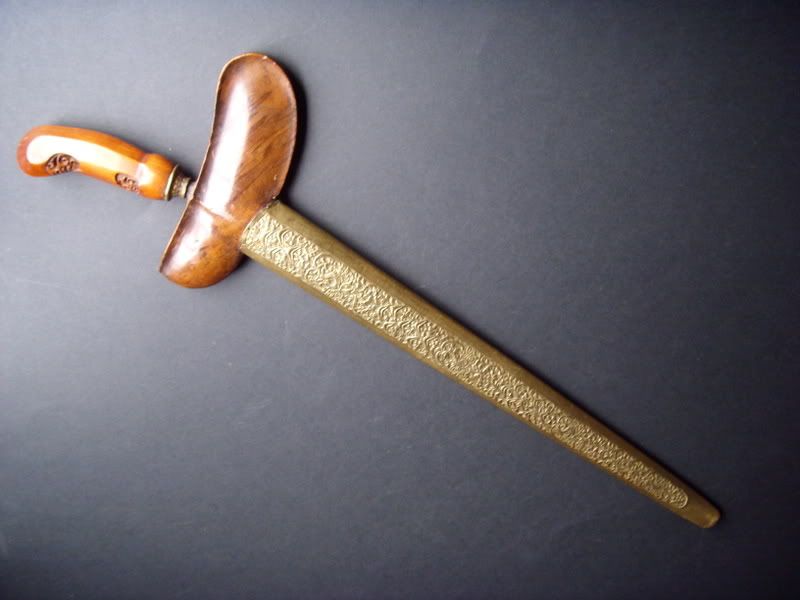   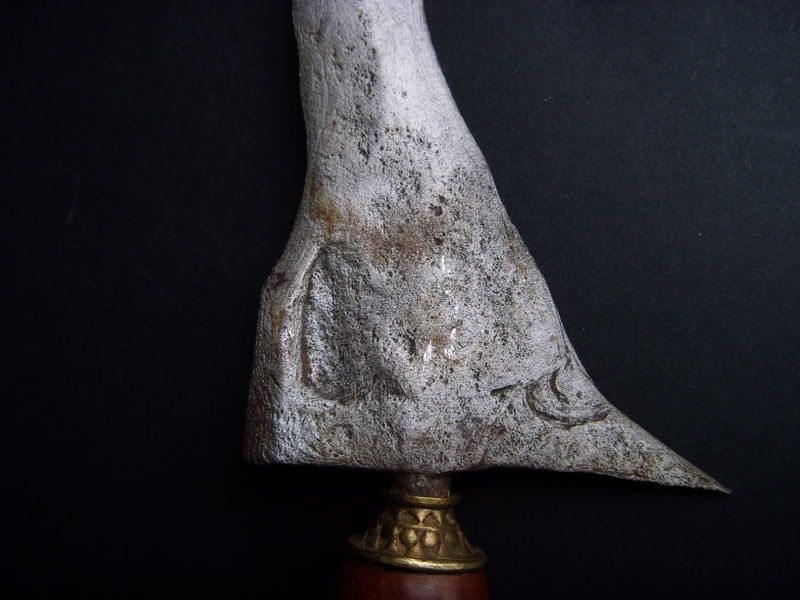 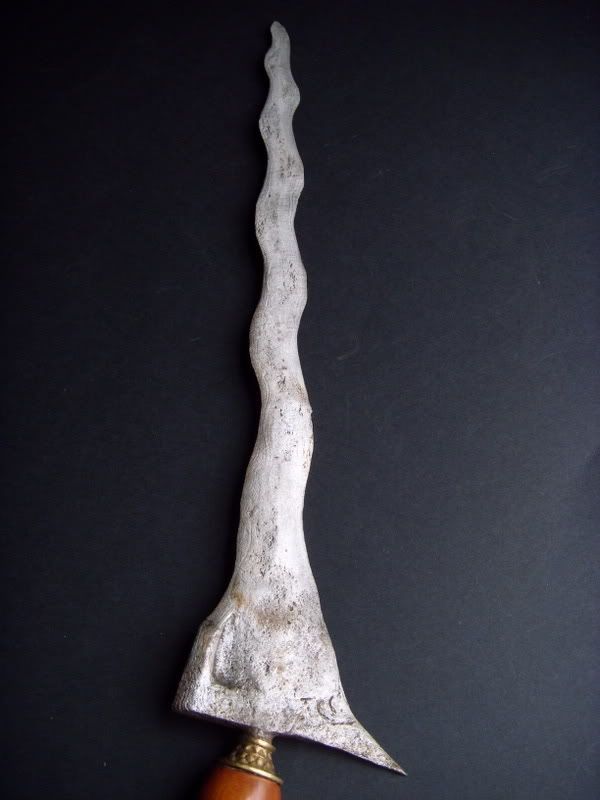 |
|
|

|
|
|
#2 |
|
Member
Join Date: Jul 2007
Location: The Netherlands
Posts: 68
|
Hello Freddy,
It looks to me the far end of the tip has been broken or something like that and is reshaped afterwards ... Looking at the "structure" of the metal, I also have the feeling this keris has been heavely treated with some kind of acid; not warangan but something else. (...but of course I can be wrong, after all I'm not a "connoisseur") 
Last edited by sjors; 24th February 2009 at 08:06 AM. |
|
|

|
|
|
#3 |
|
Vikingsword Staff
Join Date: Nov 2004
Posts: 6,378
|
The deep pitting would seem to indicate that Sjors .

|
|
|

|
|
|
#4 |
|
Member
Join Date: Dec 2004
Location: Sint-Amandsberg (near Ghent, Belgium)
Posts: 830
|
The blade still shows some pamor, though.
Have a look : 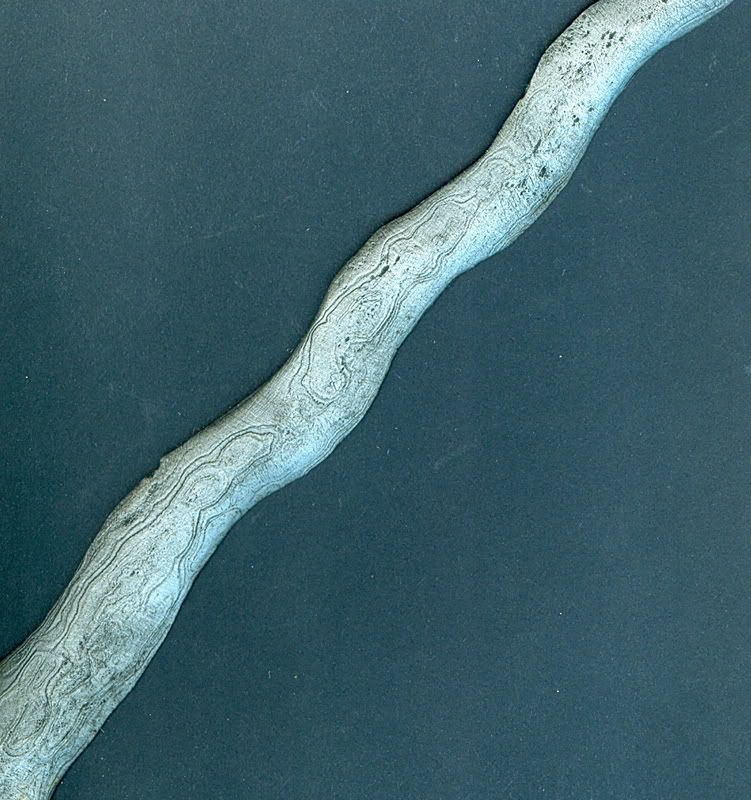 And here's a close-up of the tip of the blade : 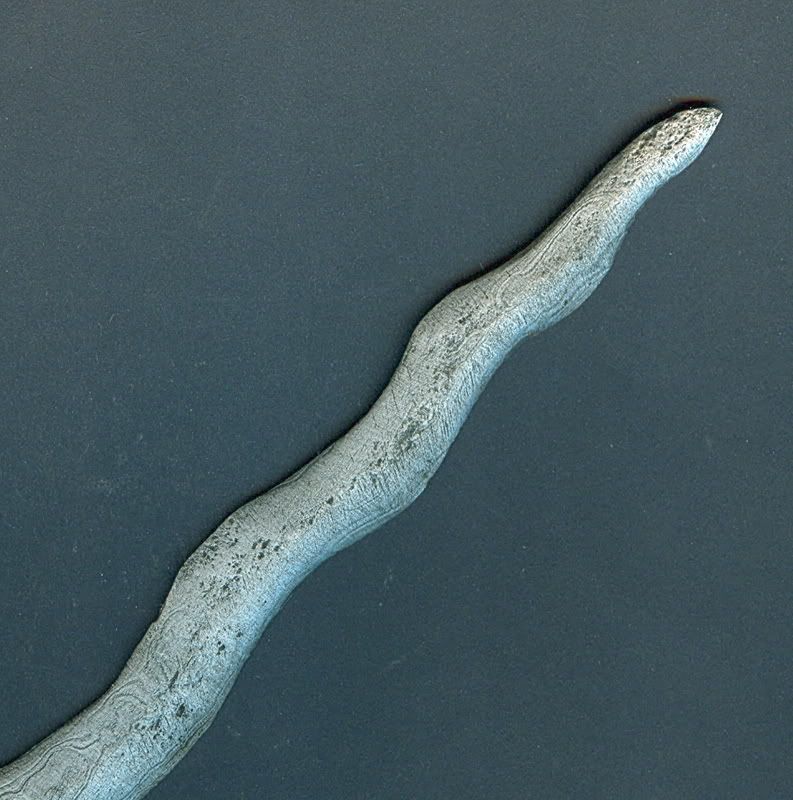
|
|
|

|
|
|
#5 |
|
Member
Join Date: Dec 2004
Location: The Netherlands
Posts: 1,209
|
The tip has been reshaped indeed. The signs of that actions are clearly visible.
I don't think the blade has been treated with accid to give it an older look, but to remove the rust. I think this keris would look completely different when it would be stained again with warangan. |
|
|

|
|
|
#6 |
|
Member
Join Date: Dec 2004
Location: Sint-Amandsberg (near Ghent, Belgium)
Posts: 830
|
Yes, I know. Staining the blade would improve it. Problem is that this is not easily done in Belgium.
Any ideas on the dapur of this blade ? It has a ganja iras, so this must make it possible to identify it. In the first book by Tammens, I found dapur chengkrong (according to the author an 11 luk blade which sometimes has a ganja iras and no prabot). But isn't dapur chengkrong or cengkrong different to my keris ? |
|
|

|
|
|
#7 |
|
Member
Join Date: Dec 2004
Location: The Netherlands
Posts: 1,209
|
The first book of Tammens can give a nice indentification of a dapur. I learnt however in the past that pinning a blade down in a dapur is rather tricky. Alan Maisey gave some magnificent examples of this behaviour.
|
|
|

|
 |
|
|